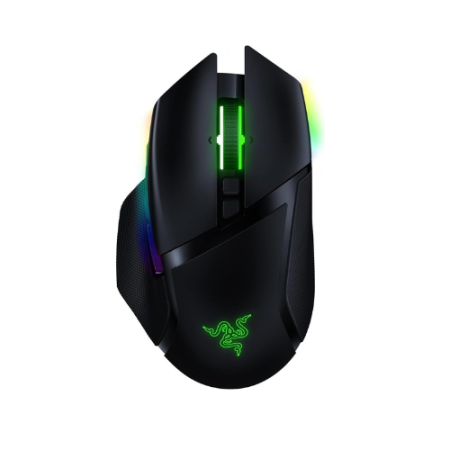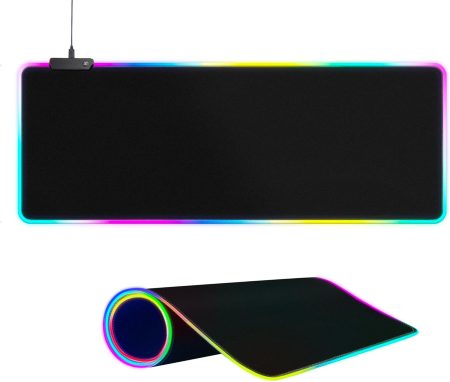Your computer needs periodic cleaning and maintenance to work optimally. Skipping this may slow down your PC, and in the worst scenarios, its components may overheat. Usually, overheating and malfunctions emerge because of dust accumulation inside the CPU.
Besides damaging your computer’s parts, dust can work as an insulator that prevents heat sinks and other parts from cooling down. Given this, it’s crucial to learn the right techniques for cleaning your CPU, and this guide walks you through the process.
Cleaning the CPU in 6 Easy Steps
Cleaning the interior of your computer’s CPU is an important part of regular maintenance. Dust and debris can accumulate, causing your computer to slow down and potentially overheat.
Please note that instead of showing you how to clean the processor alone, we will take a whole approach to clean the entire computer as there is nothing much to clean in a processor. Moreover, the processor is a delicate part that you should not mess with.
Before we get to the steps of cleaning your CPU, here is what you will need:

Things That You Need
- A screwdriver
- Cotton swabs (Q tips)
- Compressed air can
- Rubbing alcohol
- Cleaning cloth
- Thermal paste
Step 1: Power Off and Unplug
Before you begin cleaning your CPU, it’s important to power off and unplug your computer.
Step 2: Open the System Unit Case
Once your computer is powered off and unplugged, you’ll need to open the CPU cover using a screwdriver. This will allow you to access the internal components of the CPU.
Step 3: Dust the Internal Components
Use compressed air to dust the internal components of the CPU, including the motherboard, processor, expansion cards, and memory. Use short bursts of compressed air for the best results.
Step 4: Clean the Case Fans
The case fans help keep your CPU cool by circulating air inside the case. To clean them, hold the fan firmly and use compressed air to blow any debris. Be careful not to spin the fan blades too quickly, as they can be delicate. Once you’ve removed the dust, you can use rubbing alcohol to give the fans an extra shine.
Step 5: Clean the Power Supply
The power supply is a crucial part of your computer that provides power to all other components. Use compressed air to blow dust from the power supply, including beneath it.
Step 6: Clean the Heatsink and Processor Fan
The heat sink and processor fan help keep the CPU cool by dissipating heat. If you need to remove buildups, you may need to remove the fan or heatsink from the motherboard. When cleaning buildups, don’t forget to also clean the thermal grease from the processor using a damp cloth and isopropyl alcohol. Finally, use compressed air to clean the ports.

CPU Deep Cleaning Tips
Following the steps mentioned above, you can give your CPU a cursory cleanup. Here are some additional tips:
• Tips for Cleaning the External Components
You can wrap up the job with a few Q tips and a wet cloth. Use the wet cloth to clean the monitor screen and leverage the Q tips for cleaning the space between the keys.
• Tips for Cleaning Internal Materials
Ideally, you should remove the power supply and the motherboard before cleaning the internal parts of your PC. If you don’t have a compressed air can, you can remove the graphics cards and hard drives to clean them. Typically, a dry cloth works well for wiping the power supply or hard drive.
For cleaning caked-on-dirts, you can use alcohol. In addition, you can remove the ramp or CMOS batteries and clean them with compressed air, ensuring thorough dirt removal. However, you should execute the entire process carefully, keeping the components safe and working.
• Fan Cleaning
You can clean the PC fans using compressed air. Hold the can about 6 inches away from the fan and use short bursts of air to avoid spinning the blades too quickly.
• Resetting the CPU
Cleaning your processor is more tricky than removing dust from other components. However, the job is essential as it boosts your computer’s efficiency. Check if the thermal paste of your CPU has come out from the top of the chip to the motherboard. In such instances, you need to clean the material using isopropyl alcohol and cotton swabs.
Furthermore, you can clean the heat sinks using the materials you have. Now move towards the area around the CPU socket and clean it thoroughly. Once done, you can reinsert the CPU chip and fix it using the thermal paste. However, when applying the thermal paste, check for leaks and spillover. Besides, avoid using inadequate paste as it may overheat the chip. The optimal quantity is identical to a piece of a pea.

Signs That Your CPU Needs a Cleaning
When your CPU badly needs cleaning, it exhibits some obvious signs. They include the following.
• High Temperatures
Your system overheats when your CPU has a clogged heat sink. While you may not feel the computer case hot to the touch, different utilities can easily detect the CPU’s internal temperature. You can install these utilities in the system tray and observe your CPU’s temperature. An abnormally high CPU temperature tells you that your CPU’s heat sink is clogged and needs immediate cleaning.
• Noise
Dust accumulation in the CPU may cause unusual and constant fan noise. When your CPU’s heatsink loses its efficacy and becomes overheated, your system’s fan works hard to keep the temperature optimal.
• Instability
When your CPU’s heatsink is seriously dust-clogged and the CPU’s temperature becomes extremely high, your system will start to shut down and restart automatically. If you notice such instabilities accompanied by absurd fan noise, clean your system immediately.
Conclusion
Your CPU needs periodic cleaning to work optimally. Ideally, you need to maintain your system every three to six months. However, you should perform the job monthly if you reside in a dust-prone area. If you are confident about your DIY skill, you can perform the task on your own. However, if you find the entire process way too daunting, you can turn to professional help.








